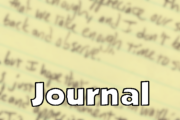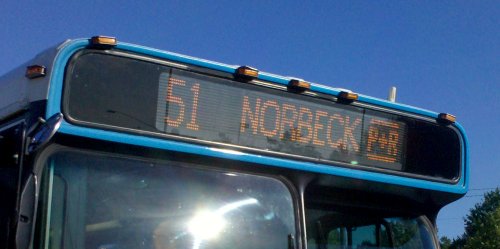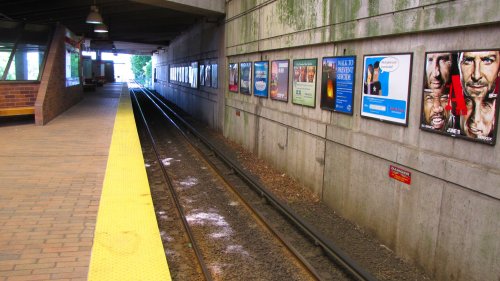My favorite phrase in the evening…
4 minute read
July 2, 2010, 7:12 PM
My favorite phrase in the evening is definitely “51 NORBECK P&R“. That’s my bus, and it means I’m going home. And it looks like this:
Yep, I see that, and it means I will be home shortly. Of course, that’s contingent on first seeing this:

And not this:

Because as you know, trains to Silver Spring do not service Forest Glen, Wheaton, and Glenmont.
That brings me to my point, I suppose. Metro’s fare structure is for the most part based on a boarding charge plus distance traveled. If you are traveling to Forest Glen, Wheaton, or Glenmont, you’re paying a pretty penny for service, and only getting half as much as the folks below you. From Metro Center during rush hour (before greed-of-the-greed, pardon me, “peak-of-the-peak” is implemented next month), it costs $3.70 to get to Forest Glen, $4.10 to get to Wheaton, and $4.55 to get to Glenmont. For that cost, every other train terminates and returns downtown well before reaching the final three stations. Let’s talk about a parity issue for a moment, here. Those of us who pay the most for Red Line service get the least amount of Red Line service. That doesn’t seem a fair bargain.
Add to that my belief that Metro was bluffing the whole time when it came to their threatened service cuts. They were never going to cut service, because it would have been political suicide for all the board members (even though a few of them need to commit political hara-kiri – yes, I’m looking at you, Jim Graham – and leave office). They did, however, play the public like a violin, getting people to say that they would be more than willing to pay higher fares rather than see service cut. And that gave them carte blanche to institute the second “Metro’s largest-ever fare increase” in a row this week (2008’s fare increase was also described as Metro’s largest).
So needless to say, I’m a bit annoyed. It’s time to discontinue the Silver Spring turnback in regularly scheduled service. Send all the trains to Glenmont. I pay substantially more per ride than someone going to Silver Spring ($3.25 from Metro Center to Silver Spring vs. $4.55 to Glenmont), and therefore for the amount I pay, every regularly scheduled Red Line train should go there to service these riders, who spend more to fund Metro’s services than someone going to Silver Spring.
This is also why we need to go to a flat fare. Metro will run trains at a given headway to the outlying stations regardless of whether there are five people on the train or 500 people on the train. Likewise, they will staff all the stations and run all the utilities regardless of how many people are actually on the train. Thus it costs Metro basically the same to take someone from Metro Center to Gallery Place as it does from Metro Center to, say, Takoma, because the train will be run in service to the end of the line regardless of passenger load. Therefore, everyone should pay equally for the provision of the entire service. That also gets into the idea that transit is a public good, and therefore everyone should help pay for it. Because the best place that I could afford is way out in the suburbs doesn’t mean I should be punished for it. Seriously.
As it is, for me, taking Metro vs. driving into work is almost a wash. And it’s these suburban cars going into the city that you want to take off the road, because they’re spewing more noxious fumes into the atmosphere by virtue of coming from further out than someone in the city. After all, one of transit’s positive externalities for everyone, transit rider or not, is less road congestion and less noxious fumes being spewed into the air. Thus one would want to incentivize these people to get out of their cars and ride the train.
However, it seems that Metro’s needlessly complicated fare structure is being taken as a given. It is being viewed as a given in Washington DC that you are charged based on how far you travel. Certain people I know would probably defend it to the death. Metro really needs to think out of the box some time when it comes to how the money is raised. First: flat fare. Second, more advertising. When I was in Boston back in May, I noticed that the walls of the stations were lined with advertisements. Metro needs to do that. The hell with the “monumental design” of the stations. They need to stick an advertisement in between every single trackside name plaque. If there’s not an advertisement between any two plaques, Metro is losing money. This is what Quincy Adams station looks like on the MBTA:
Metro needs to do this. It’s really not as bad as people would think, and if it helps fund service, all the better. Perhaps the trackside signage itself could also be revised, to allow space for more advertisements, and perhaps make the station signage more prominent in the process. Why hasn’t Metro thought of this?
Likewise, they need to install advertising boxes at New York Avenue, Morgan Boulevard, and Largo Town Center. Almost six years after opening, these stations are still devoid of advertising. Metro is losing money at these stations due to lack of advertising. They need to put some in.
Okay, I’m finished. Metro really needs to look at all of its options when it comes time to raise more revenue, with fare increases as a last resort. Likewise, Metro should ensure a fair level of service for all, and look at how it distributes costs amongst its riders.
Web site: The Totten Life, on "Riding on the Metro: WMATA Swimming Through Apologies"
Song: iJustine sings about Harris Teeter. Someone needs to tell iJustine that Harris Teeter is a yuppie grocery store...
Quote: Meanwhile, I ought to fantasize about how to handle Metro's budget issues some time, too. Oh, and for those of you who think that everything that Metro does is golden (you know who you are), I don't want to hear it.











